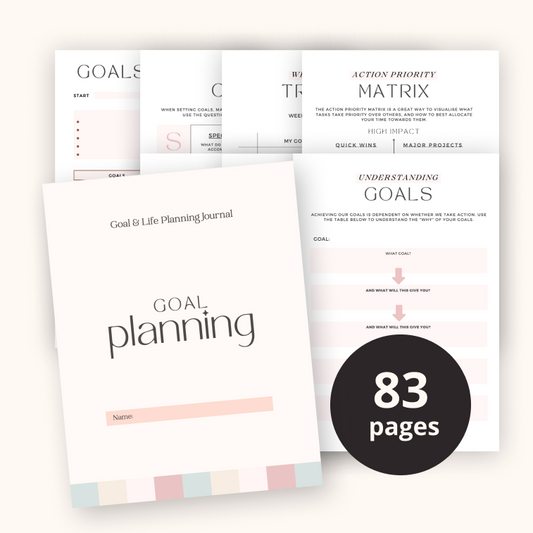As the seasons change, so can our moods. If you’ve noticed a shift in your spirits as the days grow shorter, you’re not alone.
Seasonal Affective Disorder (SAD) affects many, casting a shadow over what should be cozy, joyful months.
But fear not; understanding and managing SAD is within your reach.
With the right coping strategies, you can reclaim your joy and navigate the season with ease. From light therapy to lifestyle changes, there’s a spectrum of solutions to explore.
Let’s begin on this journey together, equipping you with the knowledge to brighten your days.
Understanding Seasonal Affective Disorder (SAD)
Hey, have you ever felt like you’re basically morphing into a bear when winter hits?
Yeah, wanting to hibernate and feeling a tad grumpier than usual?
Well, that might not just be a case of the winter blues. It could be Seasonal Affective Disorder (SAD) knocking at your door.
Let’s break it down, shall we?
First off, SAD is a type of depression that’s tied to the changing seasons.
For most people, it starts rearing its head in the fall and sticks around through the winter months, making you feel moody, sleep more, and generally less enthusiastic about life.
And before you ask, yes, it’s a real thing, backed by science and not just an excuse to skip out on social gatherings!
So, what’s the big deal behind it?
The science peeps point to a few culprits. Less sunlight messes with your internal clock, serotonin levels (that’s the feel-good brain chemical) may drop, and melatonin (that stuff that helps you sleep) could get all out of whack.
It’s like your body’s struggling to adjust to the season’s script change.
Symptoms to Watch For
If you’re wondering whether SAD’s crashing your winter party, here are some signs:
- Feeling down most of the day, nearly every day
- Losing interest in activities you once enjoyed
- Low energy and sleepiness
- Trouble sleeping
- Changes in appetite or weight
- Feeling sluggish or agitated
- Difficulty concentrating
Feeling one or more of these? It might be time to chat with somebody.
Don’t worry, acknowledging how you feel is the first step toward kicking SAD to the curb.
Light Therapy: A Shining Solution
Enter light therapy.
This straightforward remedy involves basking in the glow of a special light box for about 20 to 30 minutes daily during the fall and winter months.
It’s like bringing a slice of summer sunlight into your home, tricking your brain into thinking it’s still party time under the sun.
Don’t forget, while it’s tempting to diagnose oneself, it’s wise to consult a healthcare provider before jumping into treatments.
They can guide you on the path to feeling like your awesome self, no matter the season.
Symptoms and Diagnosis of SAD
Feeling more like a bear ready for hibernation than your usual chipper self when the seasons change? You’re not alone.
Seasonal Affective Disorder (SAD) might be the reason.
But before you invite it in for a cup of hot cocoa, let’s break down what it’s all about and how to spot it.
What Exactly Is SAD?
In a nutshell, SAD is a type of depression that shows up around the same time each year, typically in the colder, darker months.
Think of it as your brain’s response to the lack of sunlight, which can mess with your body’s internal clock and lead to feelings of sadness, low energy, and a heap of other joy-killers.
Spotting the Signs
If you’re wondering whether you’re just bummed out about missing summer or if there’s something more going on, here are some signs to watch for:
- Feeling down most of the day, nearly every day
- Losing interest in things you usually enjoy
- Changes in your sleep pattern (Hello, insomnia or, on the flip side, oversleeping!)
- Feeling sluggish or agitated
- Having trouble concentrating
- Changes in appetite or weight (Craving carbs, anyone?)
Getting the Lowdown: Diagnosis
So, think you might be dealing with SAD? First off, don’t self-diagnose. Your best bet is to chat with a healthcare professional.
They might use a questionnaire or have a heart-to-heart about your symptoms and how they’re affecting your mojo.
Sometimes, they’ll run tests to rule out other culprits that could be messing with your mood, like thyroid issues.
Why It Matters
Understanding whether you’re facing SAD is the first step in conquering it. With the right info and support, you can tailor your battle plan to light up the darker months and get back to feeling like your awesome self.
It’s all about knowing what you’re dealing with so you can kick SAD to the curb.
Coping Strategies for Managing SAD
Seasonal Affective Disorder (SAD) got you feeling like you’re in a never-ending loop of blah?
Here’s your lifeline. Wholesome’s guided journals are just what you need to kick those gloomy vibes to the curb.
Let’s get into it and find you some sunlight, metaphorically speaking.
Light Therapy: Your New BFF
First off, ever heard of light therapy? It’s like bringing a mini-sun into your room.
Seriously, a light therapy box can be a game-changer for people with SAD by mimicking natural sunlight, tricking your brain into happiness.
Aim for 20-30 minutes of exposure right after you wake up, maybe while journaling. Yes, we went there.
Get Moving
Exercise might be the last thing on your mind when you’re feeling down, but it’s a powerhouse for boosting your mood.
Even a brisk walk can send endorphins, those feel-good hormones, on a high-speed chase after your blues.
And with a portable journal? Jot down how epic you feel afterward.
Say Yes to Omega-3 and Vitamin D
Your diet is key.
Omega-3 fatty acids and Vitamin D can be allies in your fight against SAD. Fish like salmon are packed with omega-3, while Vitamin D supplements can lessen the dreariness.
Why not track your meals in your journal and see what makes you feel brighter?
Stay Connected
Isolation is like fuel to the SAD fire. Stay in touch with family and friends, even if it’s just a quick text or a coffee date.
Better, have them join you in journaling sessions. Nothing screams bonding like sharing your aspirations (and grievances) on paper.
Stick to a Routine
Humans are creatures of habit, and having a stable routine can significantly lessen the impact of SAD.
Set regular sleep, eat, and exercise schedules, and yes, your journaling time counts.
Tracking your habits can reveal patterns and help shift your mood over time.
Seek Professional Help if Needed
Sometimes, it’s just too much to tackle alone, and that’s perfectly okay. If you’re feeling overwhelmed, reaching out to a professional can provide you with the support and tools you need to manage SAD effectively.
Light Therapy for SAD
Imagine soaking up a little sunshine every day, minus the UV rays and the need for sunscreen. That’s where light therapy swings into action.
It’s been a go-to for helping folks kick the winter blues to the curb, and here’s how it works.
You get a light therapy box, a nifty little device that emits light mimicking natural sunlight, and you spend some quality time in front of it daily.
It’s like having your personal mini-sun that you can turn on whenever you need.
Why Light Therapy Rocks:
- Boosts Your Mood: Spending time in front of a light therapy box can help elevate your mood, making the gloomy winter months feel a tad less dreary.
- Regulates Your Sleep: It can also help get your sleep patterns back on track. No more counting sheep till 3 a.m.
- Easy to Use: Just plug it in, flip it on, and bask in the glow while you sip your morning coffee or catch up on emails.
- Not All Lights Are Created Equal: You’re aiming for a box that gives off around 10,000 lux, which is a fancy way of saying, "really bright light similar to morning sunlight."
- Timing is Everything: Timing your light therapy sessions for first thing in the morning tends to offer the most bang for your buck mood-wise.
- Consult the Pros: Before you immerse, it’s wise to have a chat with your healthcare provider to ensure light therapy is a good fit for you and to discuss how to use it effectively.
Lifestyle Changes to Combat SAD
Seasonal Affective Disorder (SAD) got you feeling like you’re in a wintertime slump? Well, you’re not alone.
When the days get shorter and the sunlight feels like a distant memory, it’s time to get proactive about your mental health.
Here are some lifestyle tweaks that can help you kick SAD to the curb.
Get Moving
Yes, we’ve all heard it—exercise is good for you. But when it comes to fighting off SAD, regular physical activity can be a game changer.
Whether it’s a brisk walk, yoga, or dancing in your living room, getting your body moving increases serotonin levels, boosting your mood.
Aim for at least 30 minutes of exercise most days of the week.
Eat Smart
What you eat matters, especially when battling SAD. Foods high in Omega-3 fatty acids like salmon, walnuts, and flaxseeds can improve brain function and mood.
Also, incorporating plenty of fruits, vegetables, and whole grains into your diet can have a positive effect.
Let’s not forget to stay hydrated as well; sometimes, a glass of water can make a big difference in how you feel.
Stick to a Routine
When your internal clock is off, sticking to a consistent daily routine can help. Try to wake up, eat meals, and go to bed at the same times each day.
This consistency can help stabilize your mood and improve your sleep pattern, making it easier to manage SAD.
Connect with Others
Isolation can worsen the symptoms of SAD, so make it a point to stay connected.
Whether it’s a quick text, a phone call, or meeting up for coffee, keeping in touch with friends and family can provide a much-needed lift.
Social support is key in combating feelings of sadness and loneliness.
Get Some Sunlight
Since limited daylight is a major trigger for SAD, soaking up some sun is crucial. Try to spend some time outdoors every day, even when it’s cloudy.
For indoor lighting, consider using a light therapy box, especially in the morning, to mimic the effects of natural sunlight.
Conclusion
Tackling Seasonal Affective Disorder is within your reach by adopting these practical strategies.
Regular exercise, a balanced diet, and sticking to a consistent routine are foundational steps you can take today.
Don’t underestimate the power of sunlight and meaningful social interactions to lift your spirits. Small daily actions can lead to significant improvements in your overall well-being. It’s about finding what works for you and making it a part of your life.
You’re not alone in this fight against SAD, and with the right tools, you can navigate through the darker months with a brighter outlook.




